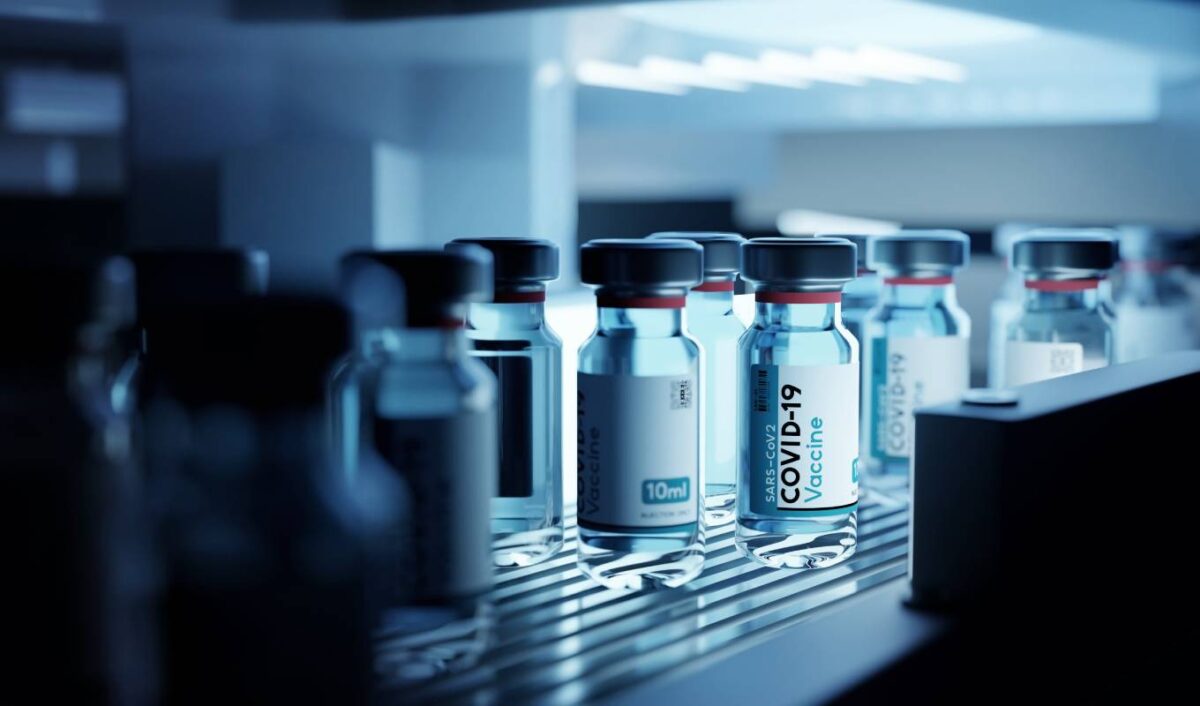The Effect of COVID-19 Vaccines on Disease, Transmission, and Infection

With the unprecedented rapid spread of the Omicron variant of SARS-CoV-2, the efficacy of the various COVID-19 vaccines has been called into question. Indeed, vaccinated people are contracting the disease at heightened rates, and COVID-19 vaccines appear to only moderately affect transmission rates [1, 2]. Fortunately, vaccines nevertheless lessen the chance that individuals will suffer from severe disease and be infected altogether [3].
The risk of severe disease is notably lower among people who have received a COVID-19 vaccine [3]. This is true of each of the vaccines currently being administered in the United States [3]. According to the FDA, the Pfizer-BioNTech formula is 95.3% effective at preventing severe disease, while Johnson and Johnson’s vaccine has 86% effectiveness [3]. Meanwhile, Moderna has reported its formula as being 95% effective [3]. Although these measures have yet to be officially revised following the emergence of the Omicron variant, the WHO maintains that these vaccines still offer “significant protection” to the vaccinated [4].
Along with severe disease, COVID-19 vaccines also reduce the risk of hospitalization and death [4, 5]. In a case-control analysis of 4,513 adults hospitalized because of SARS-Cov-2 infection between March and August 2021, researchers pinpointed multiple benefits of the vaccines [5]. For one, a significantly greater number of patients were unvaccinated than not, suggesting lower hospitalization rates among the vaccinated [5]. Furthermore, vaccinated patients were less likely to be ventilated, tended to stay in the hospital for less time, and had reduced death rates [5]. Overall, these findings indicate that vaccinated individuals are more protected against the disease.
As for transmission rates, the effect of vaccines is not entirely certain. Unvaccinated individuals may contain higher concentrations of the virus, and their levels of nasal virus may drop slower [2]. This would suggest that vaccination reduces transmission. However, some studies suggest that the difference in transmission rates between vaccinated and unvaccinated people is not notable [6]. One experiment tracked the effect of the Pfizer-BioNTech vaccine on Delta variant transmission and found that, although the vaccine did appear to reduce disease transmission, its ability to do so waned over time [2].
Current events may confirm this theory, especially as Germany and the United Kingdom recorded rising breakthrough infection rates among the fully vaccinated in December, alongside the rapid spread of the Omicron variant [7]. In the UK in particular, one study noted that vaccinated people were transmitting the disease to the people in their household at similar rates as unvaccinated individuals (25% versus 23%, respectively) [7]. So, while COVID-19 cases appear less common in the households of vaccinated people and vaccines reduce disease severity, it is unclear whether they are able to reduce transmission rates [8].
Unfortunately, the highly transmissible Omicron variant has somewhat diminished the gap in infections between unvaccinated and vaccinated people [1]. Nevertheless, data collected in New York and Seattle suggest that the chance that a person will be infected by SARS-CoV-2 is reduced substantially when they have been vaccinated [1]. Because Omicron is a comparatively milder version of the virus, and the vaccine reduces disease severity, it is still highly recommended [1].
References
[1] D. Leonhardt and A. Wu, “A Growing Gap,” The New York Times, Updated December 14, 2021. [Online]. Available: https://www.nytimes.com/2022/01/11/briefing/omicron-deaths-vaccinated-vs-unvaccinated.html.
[2] S. Mallapaty, “COVID vaccines cut the risk of transmitting Delta — but not for long,” Nature, Updated October 5, 2021. [Online]. Available: https://www.nature.com/articles/d41586-021-02689-y.
[3] K. Katella, “Comparing the COVID-19 Vaccines: How Are They Different?,” Yale Medicine, Updated January 6, 2022. [Online]. Available: https://www.yalemedicine.org/news/covid-19-vaccine-comparison.
[4] S. Nebehay and M. Roy, “Vaccine effectiveness against severe COVID drops slightly, still ‘significant protection’-WHO,” Reuters, Updated December 14, 2021. [Online]. Available: https://www.reuters.com/world/evidence-suggests-small-decline-vaccine-efficacy-who-2021-12-14/.
[5] M. W. Tenforde et al., “Association Between mRNA Vaccination and COVID-19 Hospitalization and Disease Severity,” JAMA, vol. 326, no. 20, p. 2043-2054, November 2021. [Online]. Available: https://doi.org/10.1001/jama.2021.19499.
[6] M. Lipstitch and N. E. Dean, “Understanding COVID-19 vaccine efficacy,” Science, vol. 370, no. 6518, p. 763-765, January 2020. [Online]. Available: https://doi.org/10.1126/science.abe5938.
[7] G. Kampf, “The epidemiological relevance of the COVID-19-vaccinated population is increasing,” The Lancet, Updated December 1, 2021. [Online]. Available: https://www.thelancet.com/journals/lanepe/article/PIIS2666-7762(21)00258-1/fulltext.
[8] A. S. V. Shah et al., “Effect of Vaccination on Transmission of SARS-CoV-2,” The New England Journal of Medicine, Updated October 28, 2021. [Online]. Available: https://doi.org/10.1056/NEJMc2106757.
